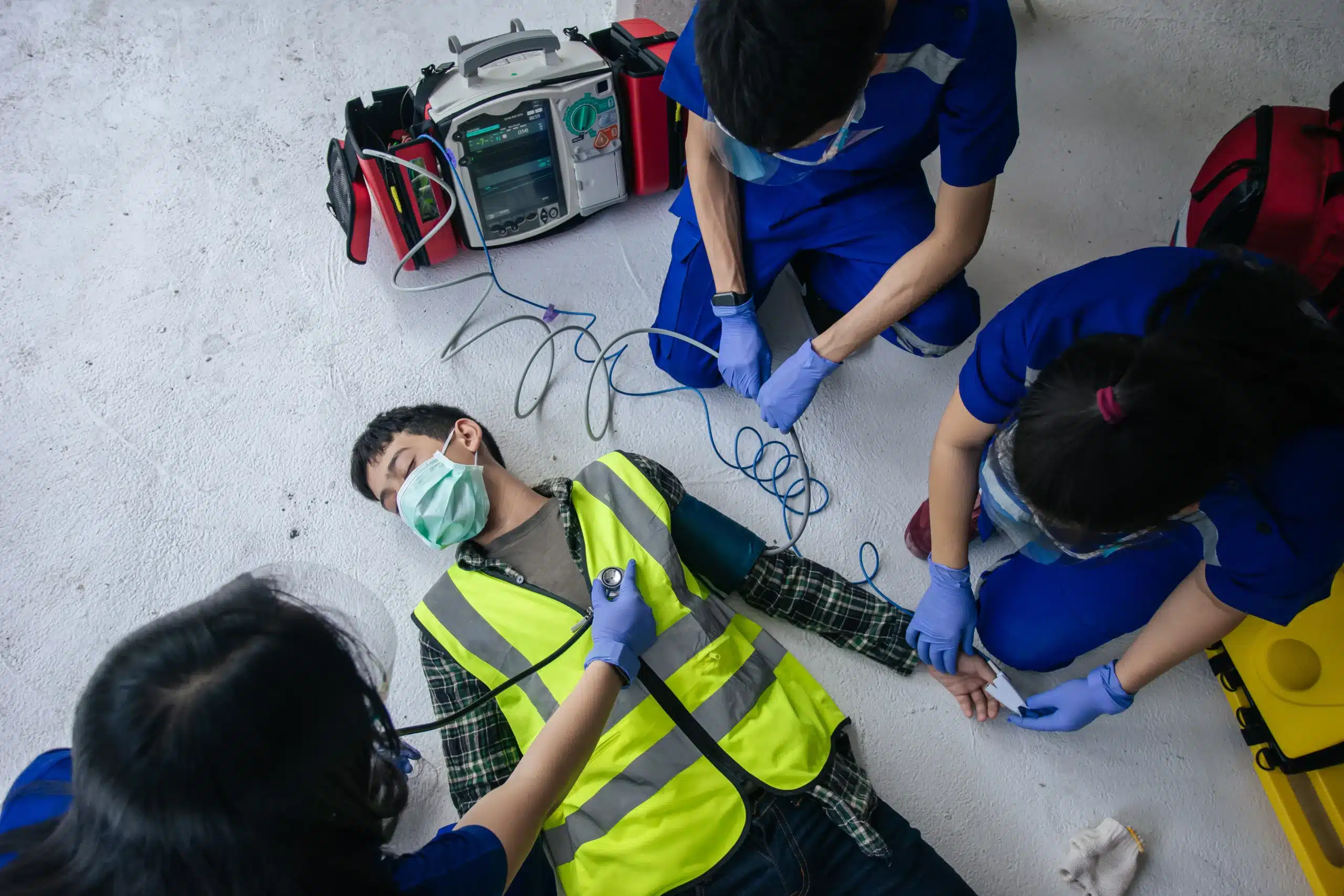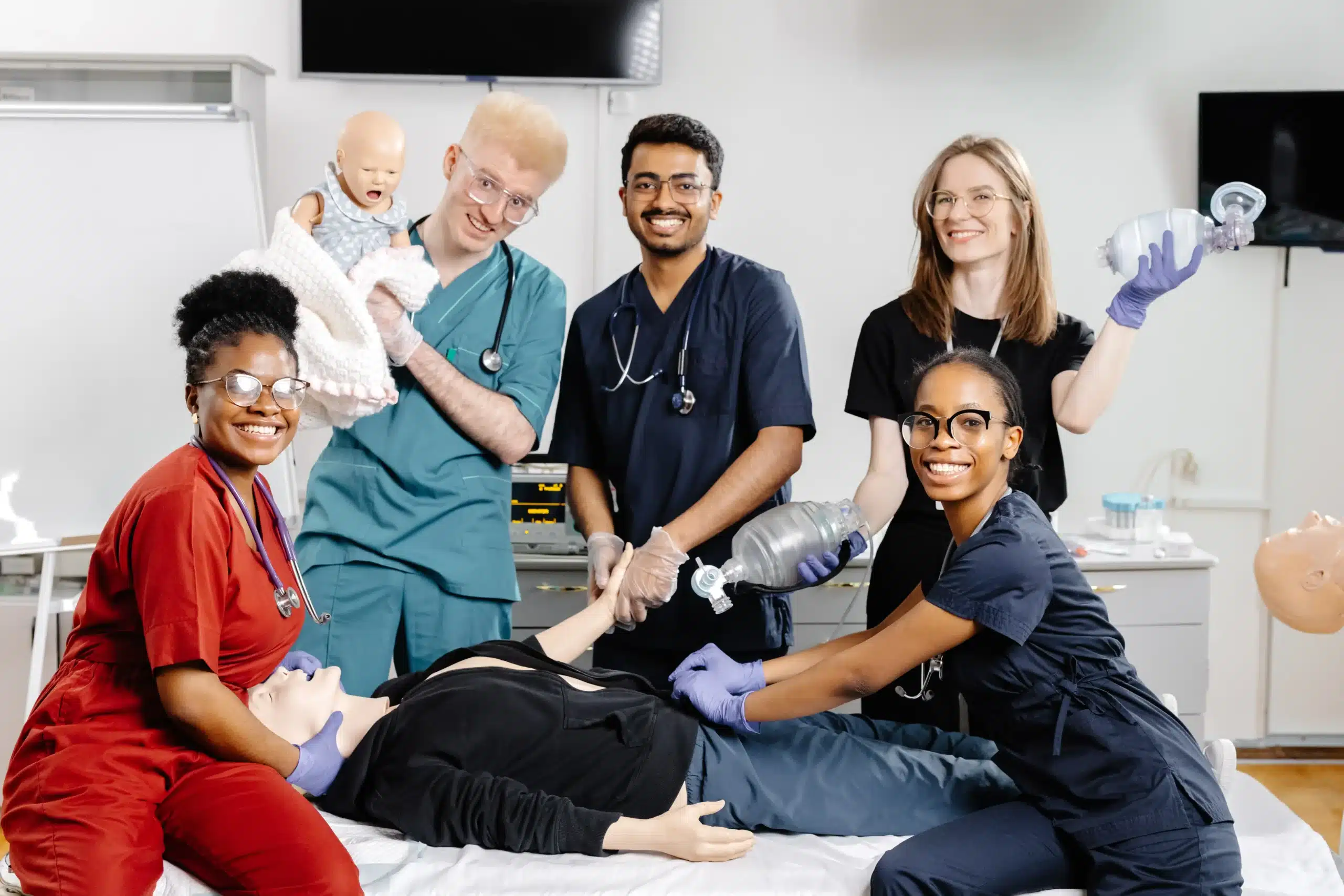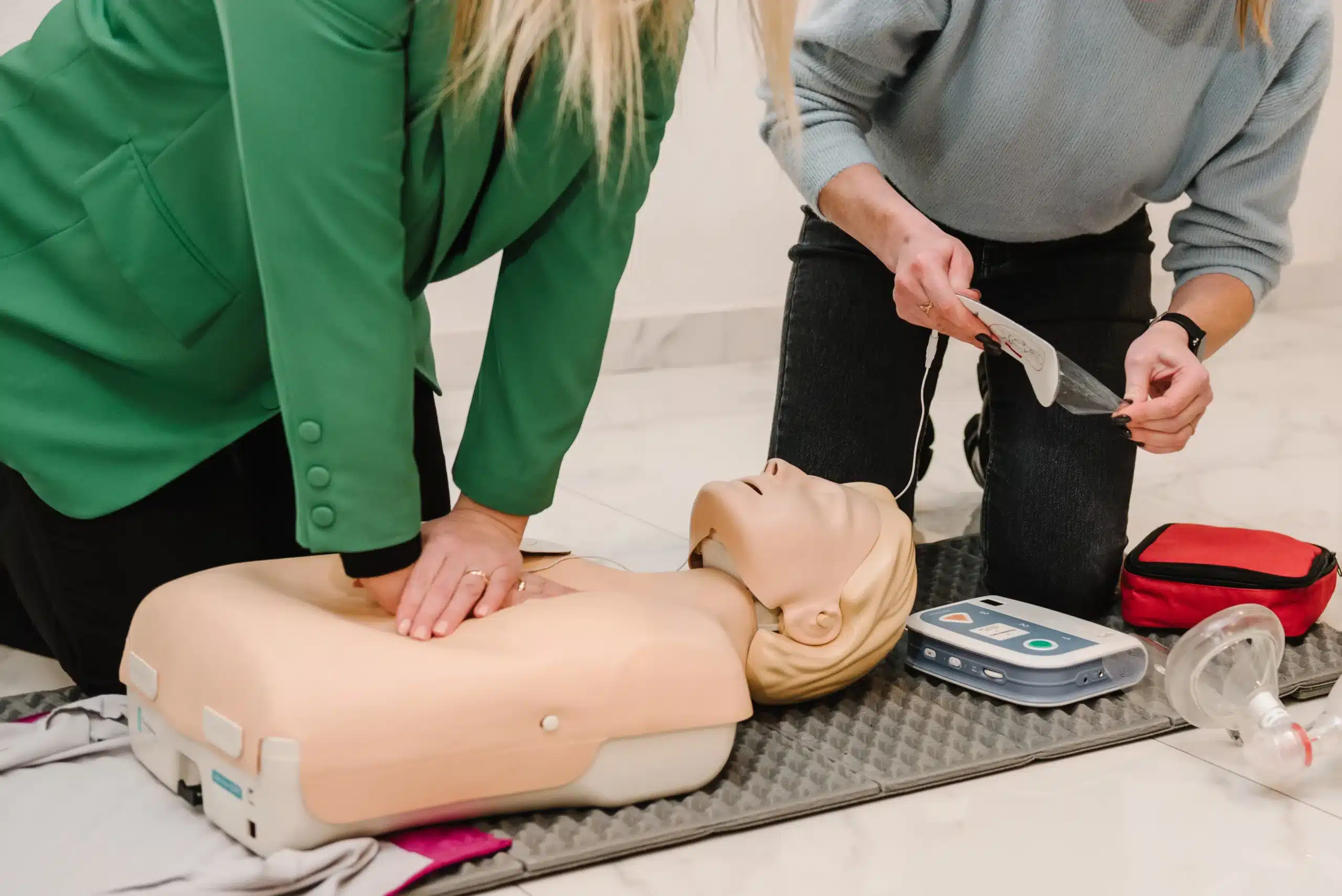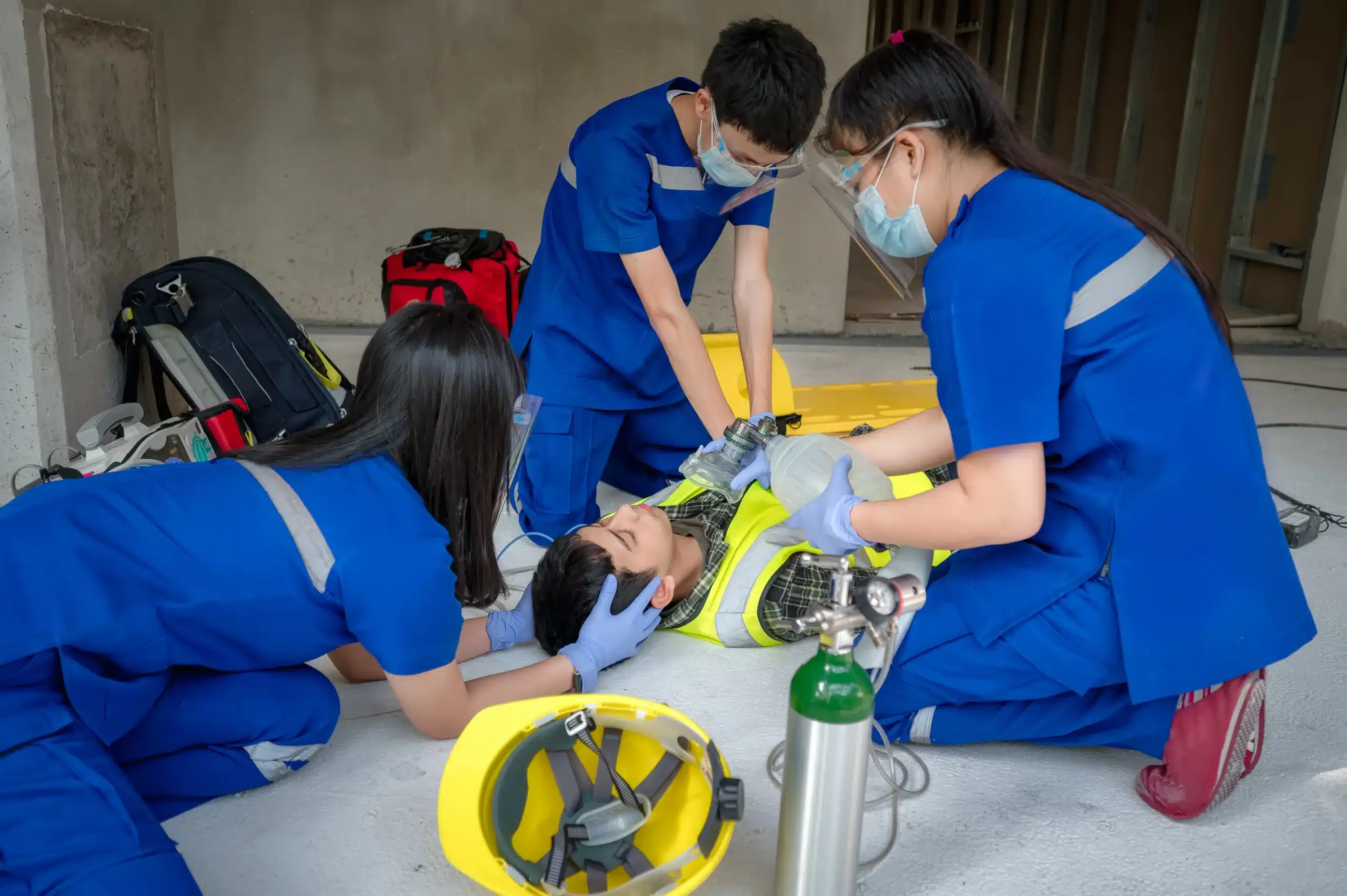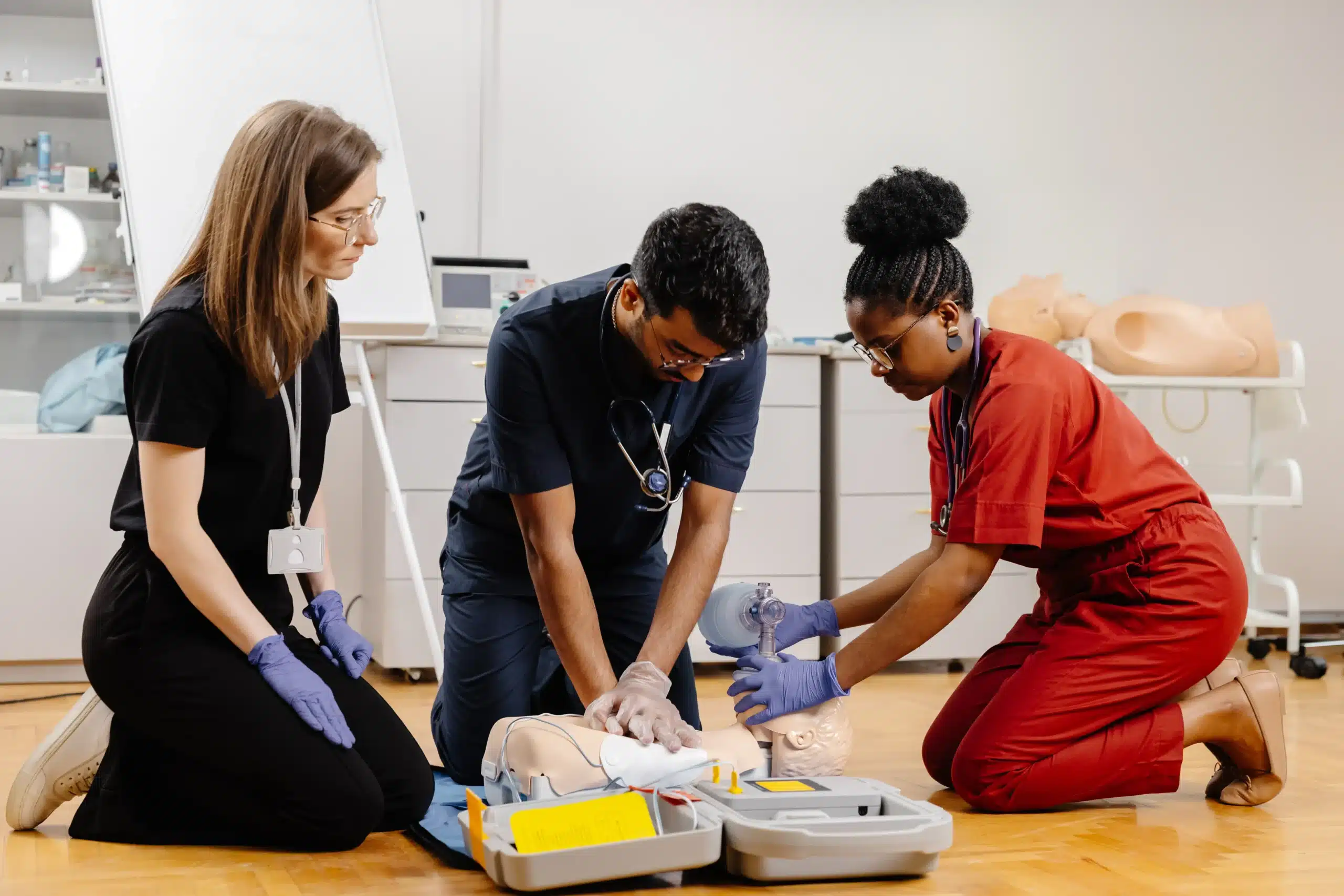Getting CPR certified has never been easier, and this guide will show you how. Whether you’re searching for “CPR certification near me” or exploring online options, we’ll provide you with all the information you need to get started. We’ll cover the different types of CPR classes, the benefits of each, and how to choose the right one for your needs. We’ll also discuss the certification process, how to find a qualified instructor, and how to maintain your skills after you’re certified. Plus, we’ll share valuable tips on finding affordable courses and discounts, so you can get the training you need without breaking the bank.
Key Takeaways
- Find the Right CPR Class for You: Whether you’re a healthcare professional, a childcare provider, or simply want to be prepared, various CPR certification options exist. Choose from online, in-person, or blended learning formats offered by organizations like the AHA and Red Cross. Consider your schedule, learning style, and employer requirements when selecting a course.
- Locate Training Near You: CPR classes are readily available. Use online search tools, contact local community colleges and hospitals, or explore providers like Safety Training Seminars to find a convenient location. Compare prices and check for discounts before registering.
- Stay Certified and Prepared: CPR skills require regular refreshing. Renew your certification every two years and practice your skills often to maintain your confidence and ability to respond effectively in an emergency.
What are My CPR Certification Options?
So, you’re ready to get CPR certified? Great! Knowing which type of class and learning format best suits your needs is the first step. Let’s break down your options.
CPR Class Types
Several organizations offer CPR training, including the American Heart Association (AHA) and the American Red Cross. While both teach the same core life-saving skills, slight differences exist in their course content and approach. For example, the AHA offers courses like Basic Life Support (BLS) for healthcare providers, while the Red Cross provides general CPR and First Aid training for the public. Other certifications, such as Pediatric Advanced Life Support (PALS) and Neonatal Resuscitation Program (NRP), cater to specific audiences like pediatricians and neonatal nurses. Understanding these distinctions will help you choose the right course for your situation. If you’re looking for AHA-certified courses in Brentwood, CA, including BLS, ACLS, PALS, CPR, and First Aid, check out Safety Training Seminars. They also offer a unique RQI program for medical professionals seeking efficient certification.
In-Person, Online, or Blended Learning: Which is Right for Me?
Figuring out the best learning format depends on your learning style and schedule. Online courses offer flexibility, allowing you to learn at your own pace from anywhere. However, they may not meet all workplace requirements, as some employers mandate hands-on training. In-person classes provide that practical, face-to-face experience with instructors, which is essential for mastering CPR techniques. Blended learning combines online instruction with an in-person skills session. This format offers flexibility while ensuring you get the hands-on practice you need. Many organizations, including the Red Cross, offer all three learning formats.
Choosing the Right CPR Class
Before signing up for a class, consider a few key factors. First, if your job requires CPR certification, check with your employer to see if they prefer or require certification from a specific organization (AHA or Red Cross). Also, think about your learning style and schedule. If you’re a busy professional, a blended or online course might be more convenient. If you prefer hands-on learning, an in-person class is likely the better choice. Finally, consider the location and cost. Safety Training Seminars offers classes in over 60 cities and has a low price guarantee, making it a convenient and affordable option for those in and around Brentwood, Antioch, and Concord. They even offer discounts for group classes. Take your time, do your research, and choose the class that best fits your needs.
How Do I Find CPR Certification Near Me?
Finding a CPR certification course that fits your schedule and learning style is easier than you think. Whether you prefer hands-on, in-person instruction or the flexibility of online learning, several reputable organizations and resources can help you locate a course near you.
Top CPR Certification Providers
American Heart Association
The American Heart Association (AHA) is a leading provider of CPR training, known for its comprehensive and rigorous courses. AHA certifications are widely accepted and often preferred by healthcare employers. They are valid for two years and typically require a higher passing score than some other organizations. AHA courses cover essential life-saving techniques and emphasize high-quality CPR performance.
American Red Cross
The American Red Cross offers various CPR and first aid training courses designed for different audiences and skill levels. Their certifications are also valid for two years, and they offer renewal courses to maintain your skills. With classes available across the country, finding a convenient location is usually straightforward.
National Safety Council
The National Safety Council (NSC) is another well-respected organization providing CPR and safety training programs. They offer a range of courses to meet diverse needs, from basic CPR for community members to advanced training for healthcare professionals.
American Safety & Health Institute
The American Safety & Health Institute (ASHI) offers CPR, first aid, and other safety training programs. ASHI certifications are widely recognized and accepted. They provide various courses tailored to different audiences, including healthcare providers, workplace responders, and the general public.
ProTrainings
ProTrainings offers a convenient way to get CPR certified online. Their flexible online format allows you to learn at your own pace, making it a good option for busy schedules. While online certification can be a valuable option, remember that some employers may require in-person skills practice and evaluation.
Safety Training Seminars
Safety Training Seminars offers a variety of American Heart Association courses, including CPR, BLS, ACLS, PALS, and First Aid. They provide certification cards and have a low price guarantee, with classes available in over 60 cities. Their RQI program allows medical professionals to obtain certifications efficiently. The Brentwood location focuses on Antioch, Brentwood, and Concord. They also offer discounts for group classes.
Local Community Colleges and Healthcare Facilities
Many community colleges and healthcare facilities offer CPR certification courses. These institutions often provide classes tailored to specific professions, such as nursing or emergency medical services. Check with your local colleges and hospitals to explore available courses. You can often find these courses listed on their websites or by contacting their continuing education departments.
Find CPR Classes with Online Directories and Search Tools
Online directories and search tools can simplify your search for CPR classes. Websites like the Red Cross and the American Heart Association allow you to search for classes based on your location and desired certification type. These tools can help you quickly find a course that fits your schedule and needs.
How Much Does CPR Certification Cost?
CPR certification costs vary depending on several factors, including the type of course, your location, and the training provider. Understanding these factors will help you find a course that fits your budget and needs.
Typical CPR Class Prices
In-person CPR classes typically range from $30 to $75. Online CPR courses can be more affordable, often ranging from $20 to $40. However, keep in mind that online-only certifications may not meet all employer requirements. For example, some healthcare providers require certifications from specific organizations like the American Heart Association or the American Red Cross. Our discount group classes offer competitive rates for businesses and organizations.
Factors Affecting CPR Costs
Several factors can influence CPR class pricing. The type of certification you need (CPR, BLS, ACLS, PALS, etc.) plays a significant role. More advanced courses like PALS (Pediatric Advanced Life Support) generally cost more than basic CPR. Blended learning courses, which combine online learning with in-person skills practice, often fall in the mid-range of pricing. Location also matters. CPR classes in major metropolitan areas might be priced higher than those in smaller towns. Finally, the training provider itself influences cost. Established organizations like Safety Training Seminars may have different pricing structures than smaller, independent providers. We also offer the American Academy of Pediatrics NRP Certification.
Get the Best Value for Your Money
To get the most out of your CPR training investment, consider what’s most important to you. If convenience is key, an online course might be a good fit. However, if you learn best through hands-on practice, an in-person class is likely the better choice. Blended learning offers a balance of both. Also, check if your employer or state has specific requirements for CPR certification. This will help you avoid paying for a course that doesn’t meet those standards. Safety Training Seminars offers a variety of courses to meet diverse needs, including EMSA Child Care Health & Safety.
CPR Class Discounts and Promotions
Look for discounts and promotions that can help lower the cost of your CPR certification. Many providers offer discounts for group registrations, students, or returning customers. Check our website or contact our customer service team to learn about current promotions at Safety Training Seminars. You can also explore options through our Northern CA CPR Directory. Remember to compare prices and offerings from different providers to ensure you’re getting the best possible value.
How Do I Choose a CPR Certification Provider?
Finding the right CPR certification provider is crucial for a valuable learning experience. Here’s what to consider:
Accreditation and Recognition
Ensure your chosen provider adheres to nationally recognized guidelines. Both the American Heart Association (AHA) and Red Cross offer CPR training aligned with these standards, ensuring your certification is widely accepted. For California residents, Safety Training Seminars offers a range of AHA-compliant courses.
Instructor Qualifications
Certified instructors are key to effective training. Training with an American Heart Association (AHA) certified instructor ensures high-quality instruction and a legitimate certification. Experienced instructors bring expertise and can answer your questions thoroughly.
Check Reviews and Testimonials
Reading reviews from past students provides valuable insights into a provider’s teaching style, materials, and overall learning environment. The Red Cross emphasizes that its training materials are developed by experts, reflecting current best practices.
Verify Employer Acceptance
Always check which certifications your employer or school accepts before registering for a course. Acceptance varies, so confirming beforehand prevents potential issues down the road. This simple step ensures your certification meets the required standards.
What is the CPR Certification Process?
Getting your CPR certification is straightforward and empowers you to handle emergencies. It typically involves registering for a training course covering essential life-saving techniques. Organizations like the American Red Cross and the American Heart Association offer various class formats, including online, in-person, and blended learning options, so you can choose the best fit for your schedule and learning style. Here at Safety Training Seminars, we offer in-person classes in Brentwood, focusing on the Antioch, Brentwood, and Concord communities. We also offer classes in over 60 cities and have a low price guarantee, so visit our website to find a class near you.
What Happens During a CPR Class?
CPR classes cover the skills needed to respond to cardiac and breathing emergencies. You’ll learn how to perform CPR on adults, children, and infants, how to use an Automated External Defibrillator (AED), and what to do if someone is choking. The class will combine instruction, demonstrations, and hands-on practice to build your confidence and competence in these critical skills. For healthcare providers needing certifications like PALS, consider our PALS course. We also offer the American Academy of Pediatrics NRP certification; learn more here.
How Long is My Certification Valid?
CPR certifications are typically valid for two years. This standard ensures that rescuers maintain up-to-date knowledge and skills, essential for providing effective assistance in emergencies.
Renewing Your CPR Certification
Renewing your CPR certification involves taking a refresher course before your current certification expires. Renewal classes cover any updates to guidelines and reinforce essential skills. This ensures you remain prepared to respond confidently to emergencies. For those looking for group discounts, we offer options.
Maintain Your CPR Skills
Even with a valid certification, regularly practicing your CPR skills is important. Review the steps, watch videos, or practice with a friend or family member. Staying familiar with the techniques will help you react quickly and effectively in a real emergency. You can also explore resources like our Northern CA CPR Directory for additional training opportunities and information. For childcare providers, we offer the EMSA Child Care Health & Safety program, which you can learn about on our site.
Related Articles
- CPR Training in Concord: Find Right Course for You
- Online CPR Classes in Brentwood: A Complete Guide
- CPR and First Aid in Concord: Your Comprehensive Guide – Brentwood CPR Classes
- CPR Classes in Concord: Your Complete Guide – Brentwood CPR Classes
- CPR Certification Brentwood: Your Complete Guide – Brentwood CPR Classes
Frequently Asked Questions
What’s the difference between CPR and First Aid certification?
CPR focuses specifically on life-saving techniques for cardiac and breathing emergencies, like chest compressions and rescue breaths. First Aid covers a broader range of injuries and illnesses, including cuts, burns, fractures, and allergic reactions. Often, you can take a combined CPR/First Aid course to gain proficiency in both.
How do I know if my workplace requires CPR certification?
The best way to find out is to check your company’s policies or speak directly with your supervisor or HR department. Some industries, like healthcare and education, commonly require CPR certification, while others may not. It’s always a good idea to clarify expectations to ensure you meet workplace standards.
Is online CPR certification enough, or do I need in-person training?
While online CPR courses offer flexibility and convenience, some employers and regulatory bodies require in-person skills assessment and practice. Check with your employer or the organization requiring certification to confirm whether online-only training meets their standards. Blended learning, which combines online coursework with in-person skills sessions, can be a good compromise.
How often do I need to renew my CPR certification?
CPR certifications are typically valid for two years. Renewing your certification ensures your skills and knowledge are current with the latest guidelines and best practices. Check with your certifying organization for specific renewal requirements.
What if I don’t feel confident performing CPR in a real emergency, even with certification?
It’s normal to feel some apprehension about using your CPR skills in a high-pressure situation. Regularly reviewing the techniques, practicing with friends or family, and visualizing different scenarios can help build your confidence. Remember, even basic CPR can significantly improve someone’s chances of survival until professional help arrives.


